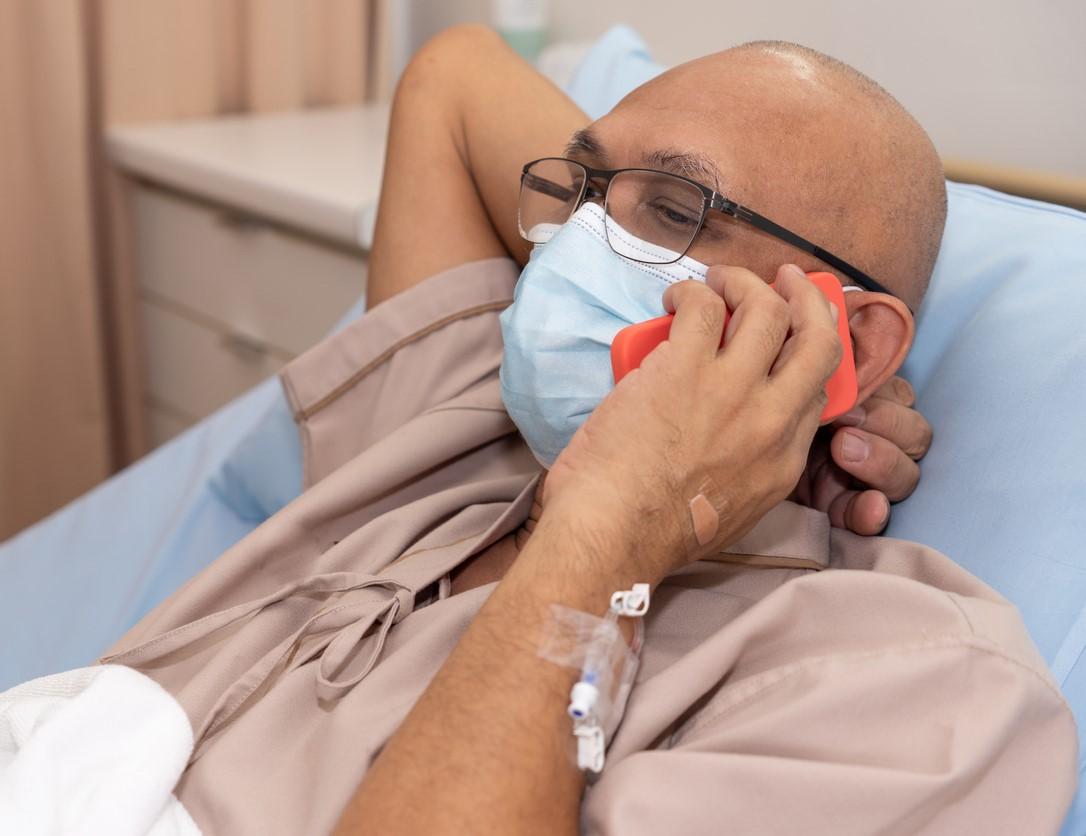Men with low testosterone levels and COVID-19 were more than twice as likely as men with normal concentrations to be hospitalized, but those treated with hormone replacement therapy weren't at elevated risk, suggests an observational study today in JAMA Network Open.
A team led by St. Louis University and Washington University researchers analyzed the electronic health records of 723 adult male COVID-19 survivors with testosterone measurements from Jan 1, 2017, to Dec 31, 2021. Most had COVID-19 in 2020, before vaccines were available.
The men had their testosterone measured because they had symptoms of low testosterone (hypogonadism), which was defined as a concentration below 175 to 300 nanograms per deciliter (ng/dL), depending on the reference lab. Testosterone concentrations were measured a median of 7 months before COVID-19 infection in 73% of patients and a median of 6 months after recovery in 27%.
2.4 times the risk of hospitalization
Of the 723 participants, average age was 55 years, average body mass index was 33.5 kilograms per meter squared (obese), 16% had hypogonadism, 60% had normal testosterone levels (eugonadism), and 25% were receiving testosterone therapy.
A total of 134 men were hospitalized with COVID-19, and these patients were older (average age, 62 vs 53 years), had more underlying medical conditions (median Charlson Cormorbidity Index [CCI] score, 2 vs 0), and were more likely to have immune suppression (19% vs 4%) than nonhospitalized men.
Thirty-two men were receiving medication to lower their testosterone levels in an effort to impede the growth of their prostate cancer, and their median testosterone level was 3.5 ng/dL. Eighteen of them (56%) were admitted for COVID-19, and 3 (9%) required intensive care.
In the unadjusted analysis, men diagnosed as having hypogonadism were 3.6 times more likely to be hospitalized with COVID-19 than eugonadic men (52 of 116 [44.8%] vs 53 of 427 [12.4%]). But after adjusting for risk factors, the risk was 2.4 times higher in those with hypogonadism.
Testosterone therapy recipients who still had low testosterone also were more likely to be hospitalized (adjusted odds ratio [OR], 3.5). But men receiving adequate testosterone therapy were at a similar risk of hospitalization as eugonadic men (OR, 1.3).
After adjustment, relative to men with eugonadism, those with hypogonadism weren't at higher risk of intensive care unit (ICU) admission (9% vs 3%; OR, 1.2), ventilation (4% vs 2%), or death (4% vs 2%). Results were similar regardless of whether testosterone levels were measured before or after infection.
There were no differences among the men with hypogonadism or eugonadism or those receiving testosterone therapy in median number of days in the hospital (6 vs 6 vs 8 days, respectively), in the ICU (6 vs 4 vs 14 days), or on a ventilator (14 vs 8 vs 12 days). After adjustment, the risk factors for hospitalization were age (OR, 1.03), high CCI score (OR, 1.3), and immunosuppression (OR, 3.5).
The most common symptoms of hypogonadism were fatigue (43%) and erectile dysfunction (30%). Other associated conditions included decreased libido (8%), gynecomastia (enlarged breasts; 5%), low mood (4%), opiate use (3%), pituitary adenoma (benign tumor of the pituitary gland; 3%), and obesity (3%).
Role of hormone replacement therapy
The researchers noted that male hypogonadism has been tied to obesity, metabolic syndrome, type 2 diabetes, kidney disease, and chronic lung disease.
"Men with chronically low testosterone concentrations have decreased muscle mass and less strength, both of which contribute to reduced lung capacity and ventilator dependence," they wrote. "Aging and the presence of comorbid conditions, which are risk factors for hospitalization for COVID-19, are also associated with hypogonadism."
They also said that testosterone therapy may lessen the severity of COVID-19 by increasing muscle mass and strength and reducing inflammation, an important factor in men with hypogonadism, who are in a generalized inflammatory state. Such therapy, however, carries an increased risk of prostate cancer and may increase the risk of heart disease.
In a Washington University press release, senior author Abhinav Diwan, MD, said that low testosterone is very common, affecting up to a third of men older than 30 years. Concentrations decline steadily at a rate of 1% or 2% per year.
"Our study would suggest that it would be prudent to look at testosterone levels, especially in people who have symptoms of low testosterone, and then individualize care," he said. "If they are at really high risk of cardiovascular events, then the doctor could engage the patient in a discussion of the pros and cons of hormone replacement therapy."






















